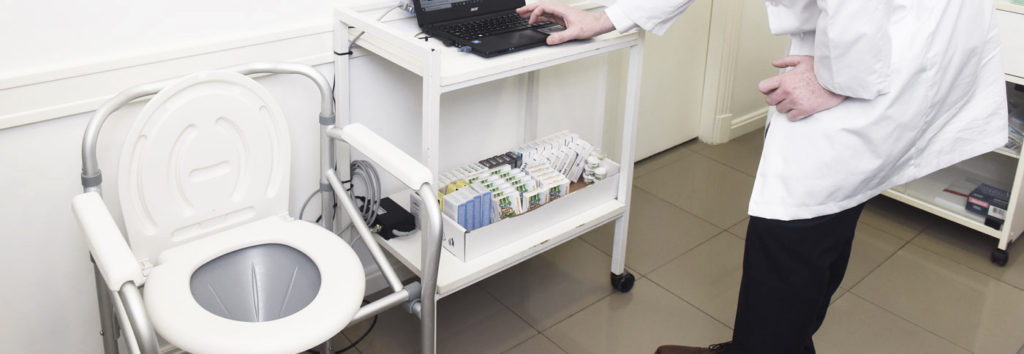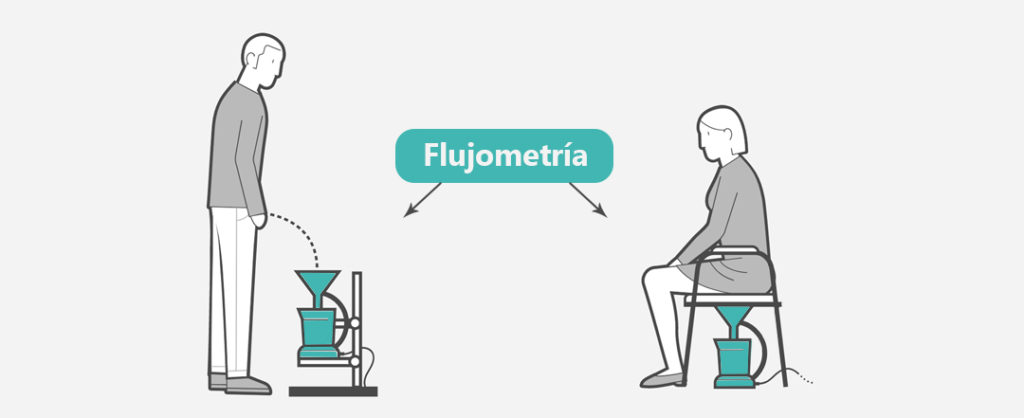Flujometría

¿Cómo se realiza una flujometría?
El procedimiento para realizar una flujometría es simple: el paciente tiene que orinar en un dispositivo (inodoro especial) y/o en un embudo medidor (flujometro).
El resultado de esta prueba es un gráfico en el que aparece reflejado el volumen de orina frente al tiempo que se ha tardado.
Esta prueba requiere orinar de forma normal y no es dolorosa.
El procedimiento para realizar una flujometría es simple: el paciente tiene que orinar en un dispositivo (inodoro especial) y/o en un embudo medidor (flujometro).
El resultado de esta prueba es un gráfico en el que aparece reflejado el volumen de orina frente al tiempo que se ha tardado.
Esta prueba requiere orinar de forma normal y no es dolorosa.
¿Qué es una flujometría?
Una flujometría o uroflujometría es un examen que se realiza, habitualmente en la consulta del Urólogo en pacientes hombres o mujeres que presentan dificultades para orinar. Esta prueba se realiza rutinariamente a los pacientes que están en chequeo de próstata con el fin de evaluar si orinan correctamente.
La definición técnica de uroflujometría es el volumen miccional (orina) eliminado por unidad de tiempo y se expresa en ml por segundo. El flujo miccional no es constante, este se modifica a lo largo de la micción, causando unas curvas de flujo características.
En esta prueba se busca medir la cantidad de orina que la vejiga del paciente es capaz de expulsar por segundo, corroborar la duración de la micción y cualquier flujo intermitente.
De esta manera se conocerá la capacidad de la vejiga, el estado de las vías urinarias y la fuerza de la musculatura urinaria.
Es importante medir el residuo post-miccional, es decir, la cantidad de orina que queda en la vejiga al finalizar la prueba de uroflujometria.

¿Qué parámetros se pueden medir en una flujometría?
- El flujo máximo (Qmax): es el valor máximo alcanzado por el flujo urinario durante la micción.
- El volumen miccional: Cantidad de orina eliminada durante la micción
- El tiempo de flujo: Es la suma de todo el tiempo durante el cual el paciente está orinando
- El tiempo de micción: Tiempo transcurrido desde que el paciente inicia la micción hasta que finaliza. Este tiempo coincide con el tiempo de flujo siempre que no haya interrupción del chorro miccional.
¿Cómo se realiza una flujometría?
El procedimiento para realizar una flujometría es simple: el paciente tiene que orinar en un dispositivo (inodoro especial) y/o en un embudo medidor (flujometro).
El resultado de esta prueba es un gráfico en el que aparece reflejado el volumen de orina frente al tiempo que se ha tardado.
Esta prueba requiere orinar de forma normal y no es dolorosa.

¿Qué preparación tengo que hacer para esta prueba?
Lo recomendable es llegar a la consulta con deseos de orinar y avisar al personal encargado cuando tenga deseos habituales de orinar, evitando estar a su máxima capacidad (nunca “a reventar”) dado que la prueba saldría alterada.
No es válida una prueba con poca cantidad de orina ni tampoco lo es cuando la vejiga está a su máxima cantidad y el paciente no puede aguantar más tiempo.
¿Cuándo es conveniente repetir la prueba?
Es recomendable repetir la flujometría cuando no se alcance un volumen de micción mayor de 150 cm3, o el paciente haya hecho fuerza con el abdomen para conseguir un chorro más fuerte. Tampoco es útil cuando se ha llenado la vejiga más allá del máximo de su capacidad.
Residuo Post-Miccional
El residuo postmiccional es la cantidad de orina que queda en la vejiga después de terminar de orinar. Normalmente un Urólogo siempre debe saber qué residuo tiene el paciente porque también es indicativo de posibles problemas miccionales. Un residuo muy por encima del 20-30% del volumen que se ha orinado puede ser patológico y puede estar produciendo un daño crónico en la vía urinaria si no se soluciona.
La forma habitual, más práctica y rápida de medir el residuo es colocando el ecógrafo en la parte inferior del abdomen para registrar el volumen de orina residual.
